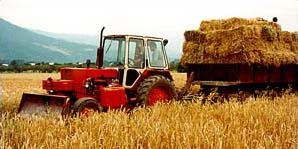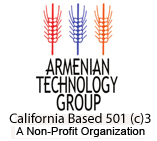
Armenia needs approximately 1,000 metric tons of alfalfa seed to be planted in order to feed its livestock. ATG’s efforts have been critical to improving Armenia’s alfalfa crop.
Beginning in 1989, ATG planted several test plots of select U.S. alfalfa seed varieties funded by private donors. Among the seed varieties, Apollo Supreme, Arrow, and Archer provided significantly higher yields per hectare than native varieties — in some areas by as much as four-fold.
After its early successes, ATG implemented a large-scale alfalfa project in Armenia in 1996 with the support of the U.S. Agency for International Development. That year alone, ATG helped private farmers in Armenia to plant 10,000 acres of U.S. alfalfa. Agronomists calculated that the high-yield alfalfa led to a doubling in the milk production of 4,737 dairy cows. In human terms, the increase in alfalfa output meant supplying 102,789 Armenian children an eight-ounce glass of milk daily for an entire year.
The use of high-yield varieties helps Armenia achieve several key goals:
- Replenish over-used soil with nitrogen, which will increase future wheat yields.
- Increase dairy production and the supply of fresh milk available to Armenian children.
- Provide high-quality forage for livestock, especially during the harsh winter months. Healthier animals, in turn, will provide Armenia with more meat and milk.

Follow Us